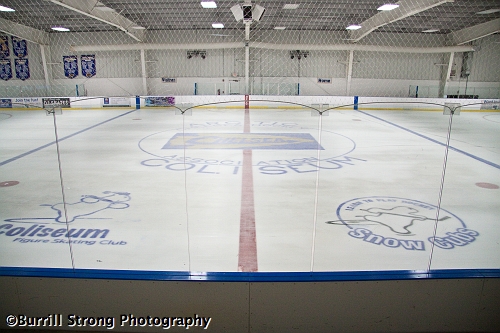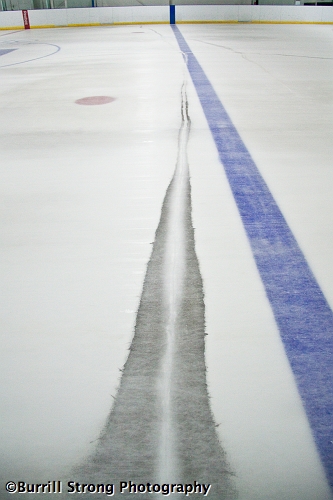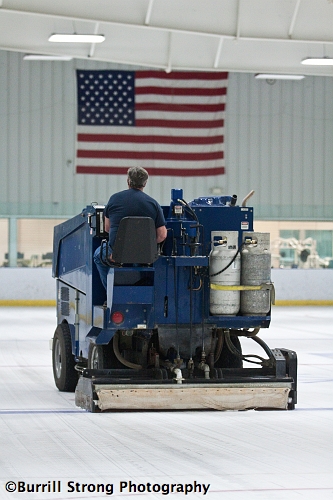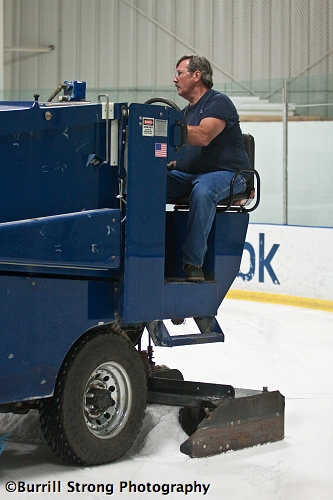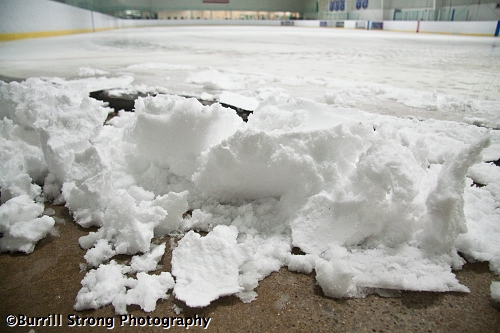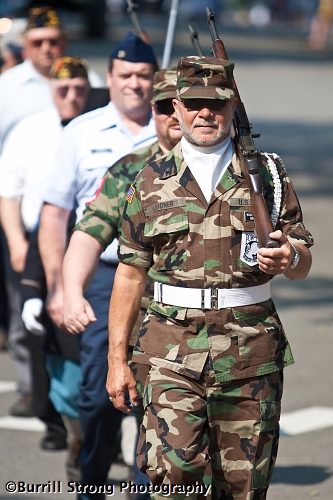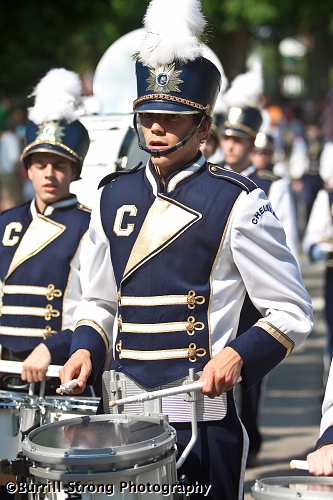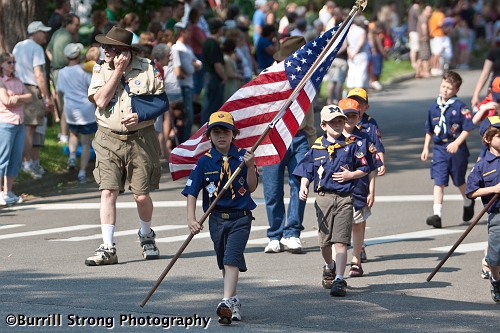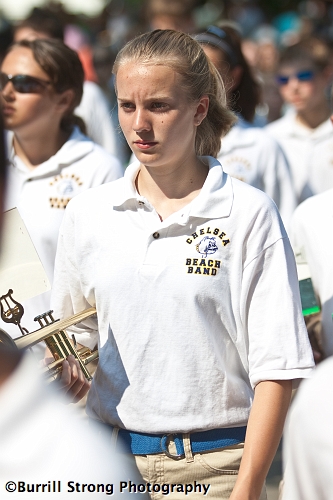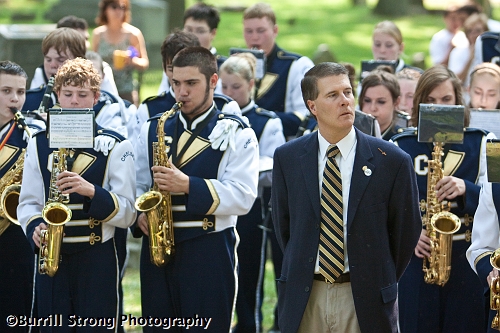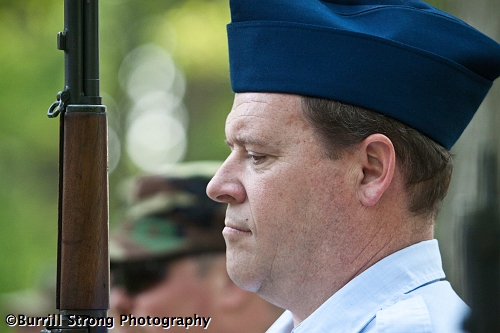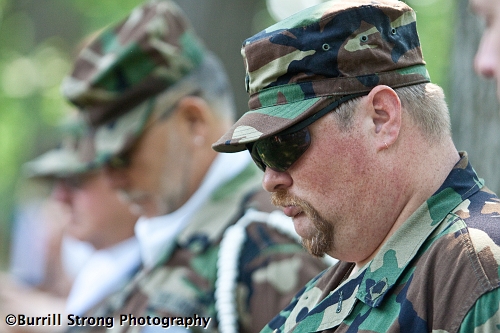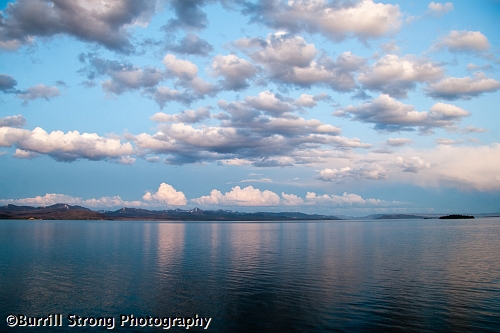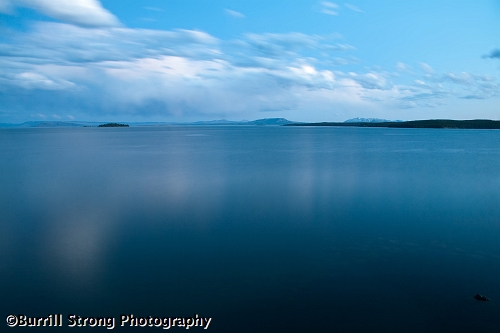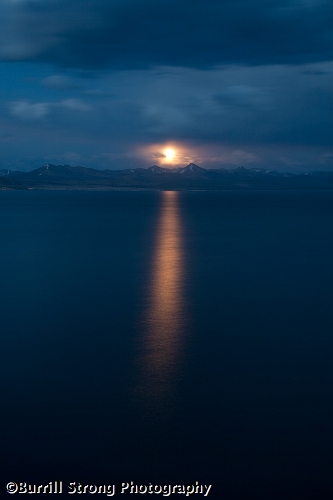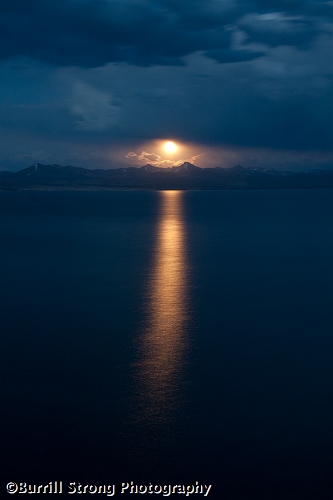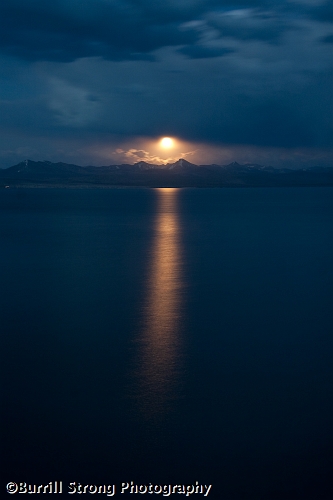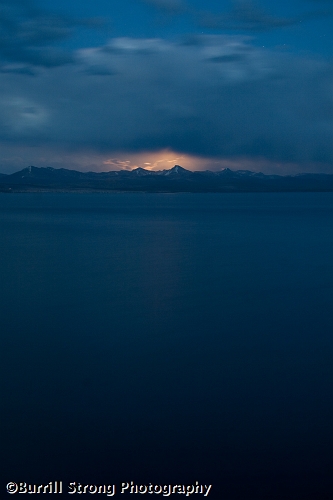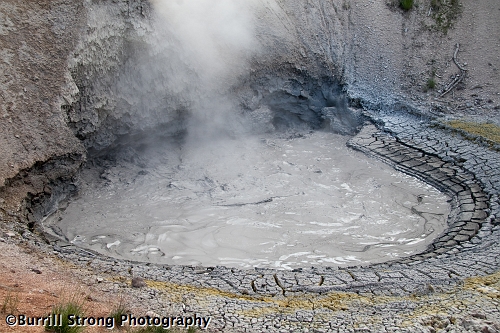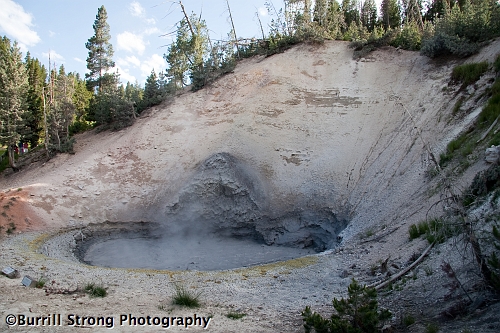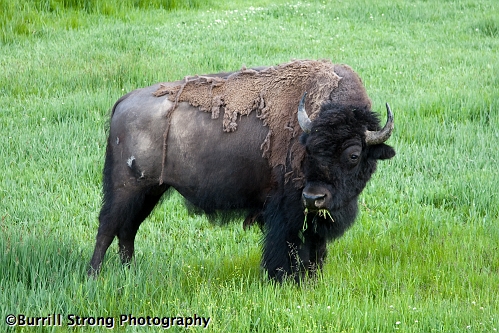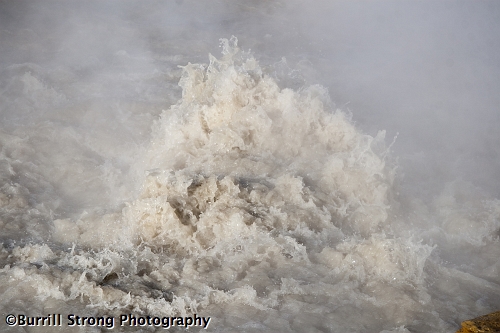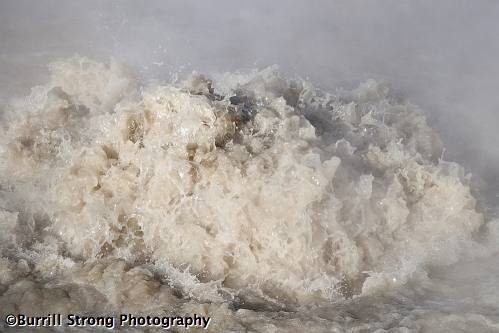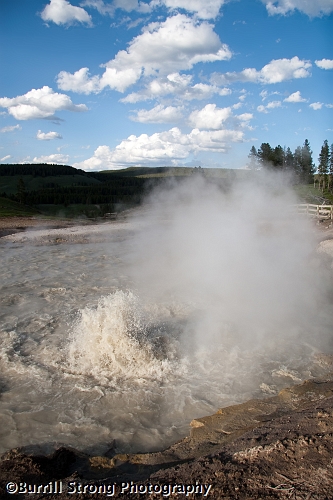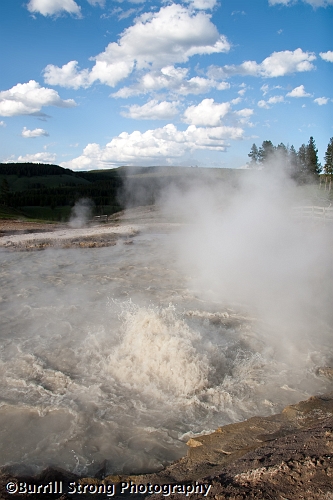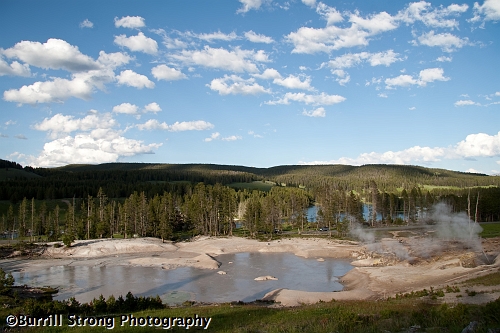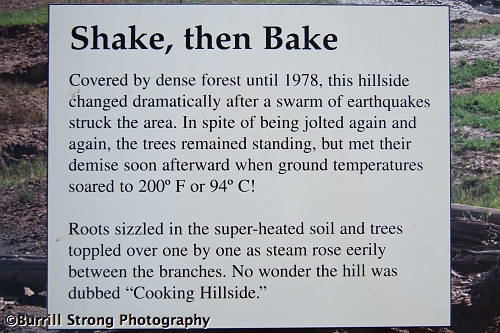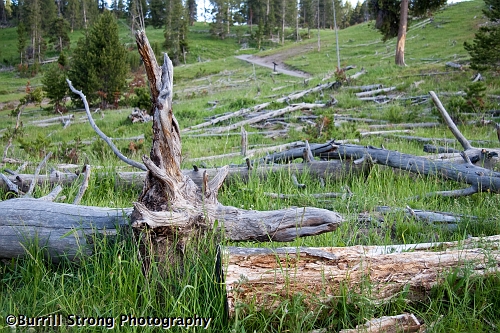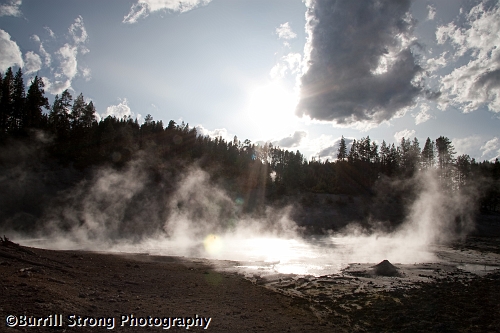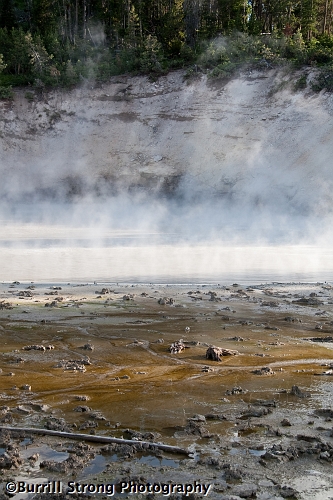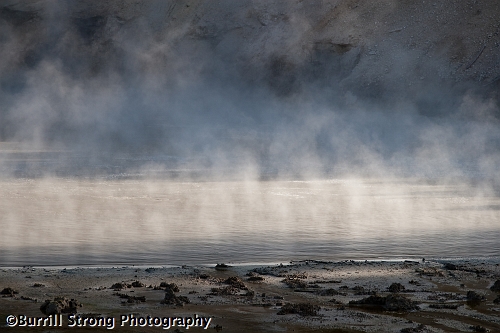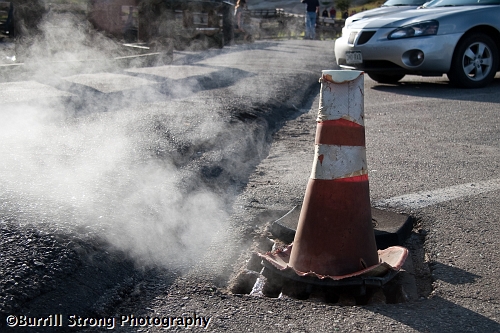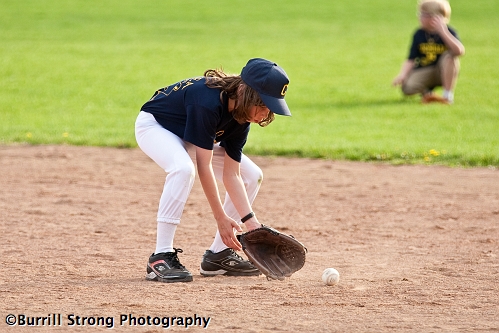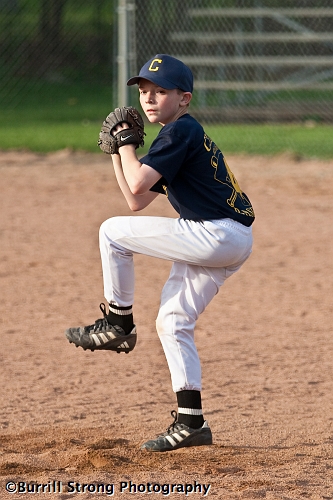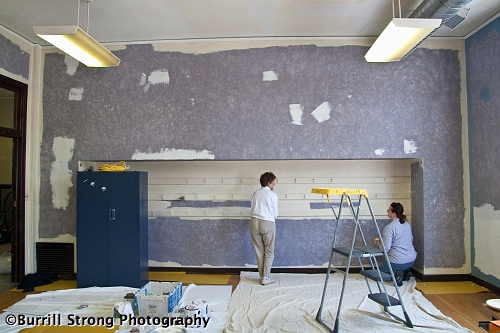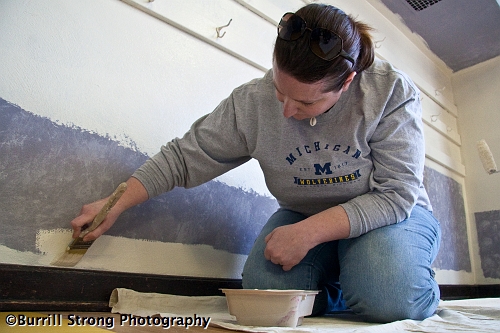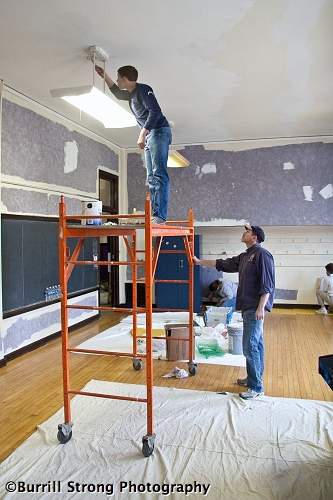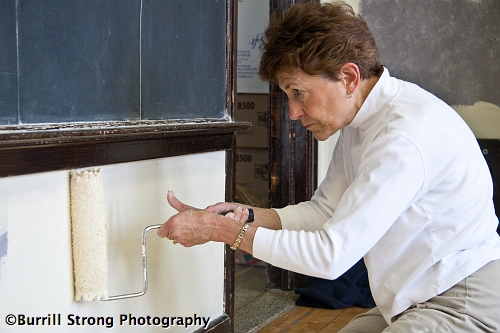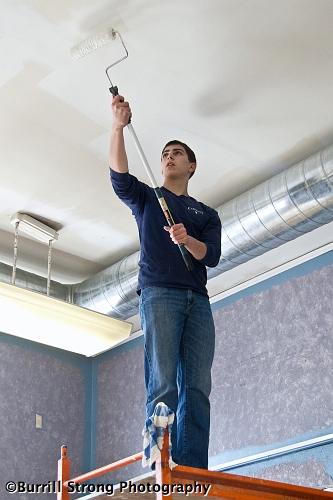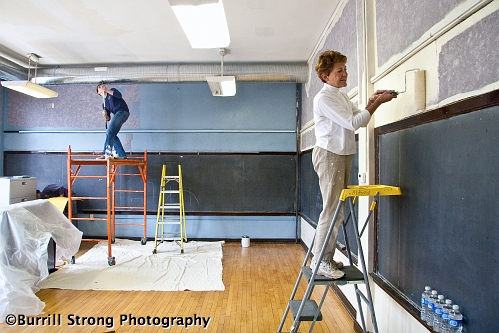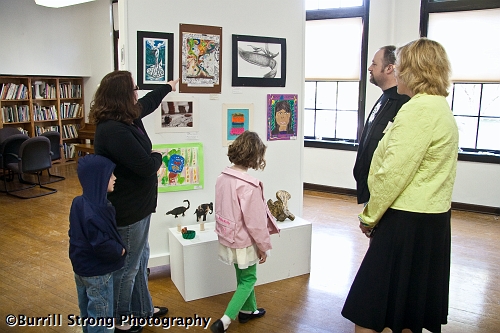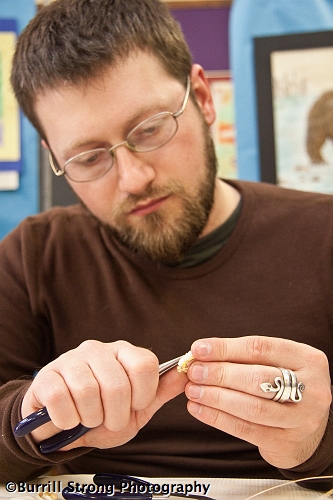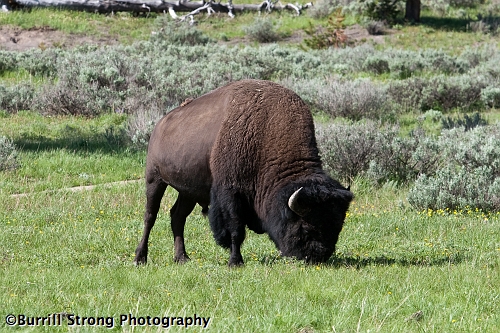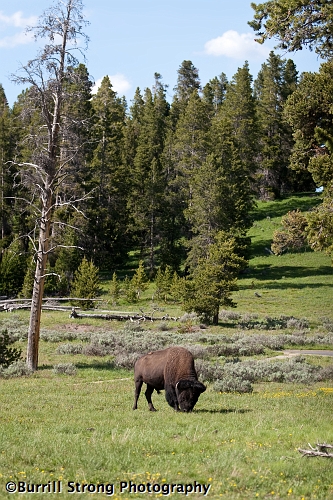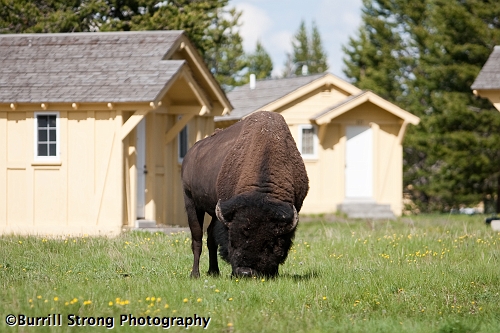Required reading: day 1
When last we left the rink, the ice was looking unusually textured, but it was still white; however, warm temperatures and relentless Zambonis have a way of making ice disappear.
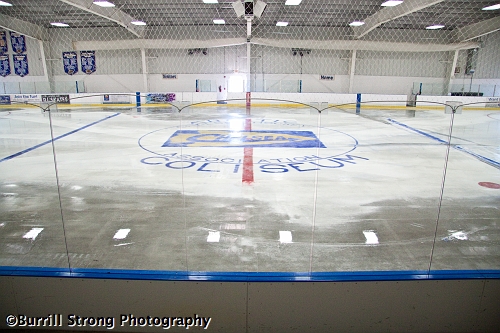
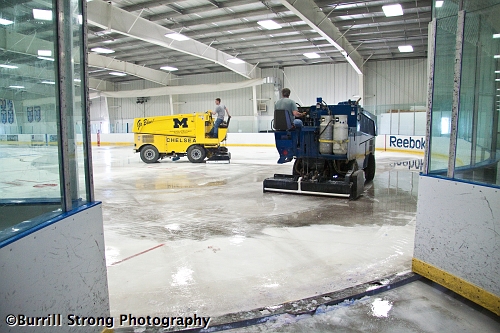
The first picture shows a clear sign of progress: the Zambonis had started to remove the paint layer, thus providing a better look at the sand below the ice. Most of the sand was visible only through a layer of ice, but in a few places around the rink the ice had melted away entirely, providing an unobstructed look at the very soggy sand.
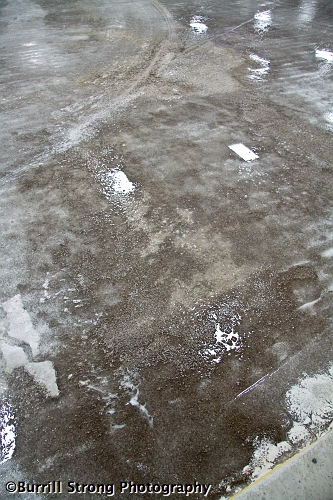

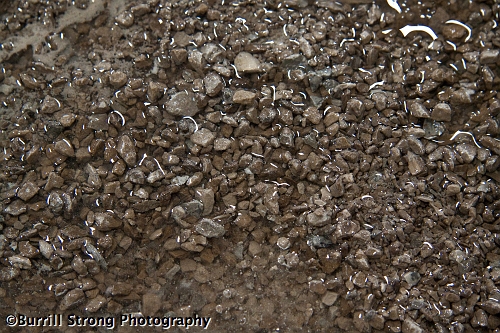
The rest of the rink was still covered in ice, but as shown by the layer of water on the ice, it was melting rapidly.
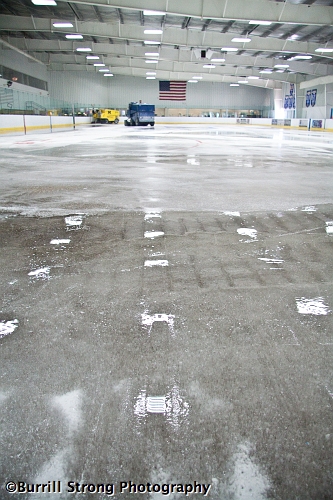
If you were wondering where all that paint ends up, the answer is simple: it ends up with the rest of the ice shavings the Zambonis collect. Normally the snow ends up in a collection tank in the back of the arena, but because the amount of snow was unusually large and patriotic, it ended up on the grass behind the arena.
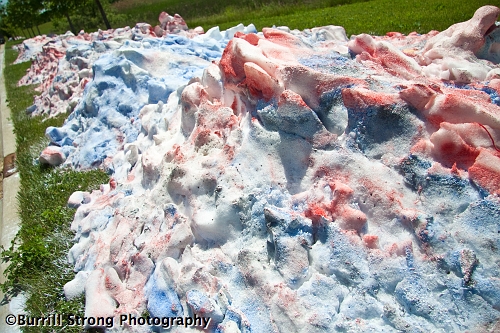
A few hours later there wasn’t enough ice left for the Zambonis to shave, so the rink was left alone to melt.
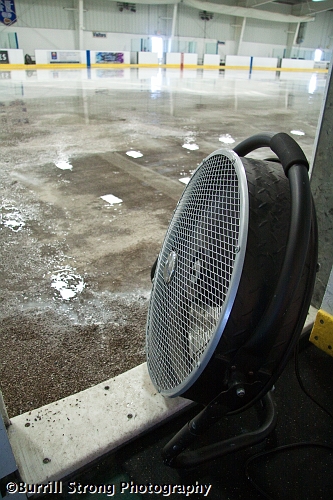
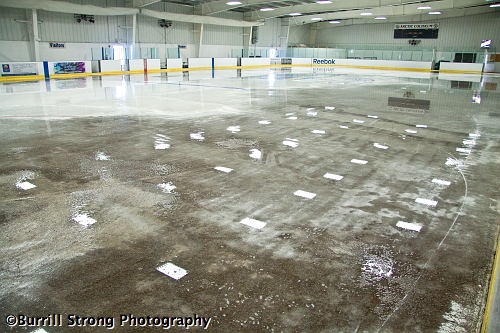
The standing water on the surface provided a reflective surface perfect for cool-looking photos that do little to illustrate the ice replacement process.

It wasn’t all appealing: the cracks, which were ugly at the start, became a different sort of ugly as the ice melted, further accentuating the need for the project.
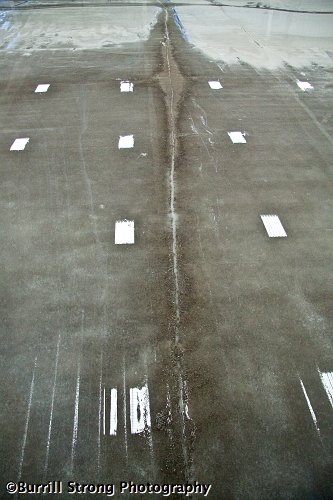

Since the paint freezes when it’s applied, it melts along with the ice and travels with the ice shavings, leaving behind plenty of evidence along its route.
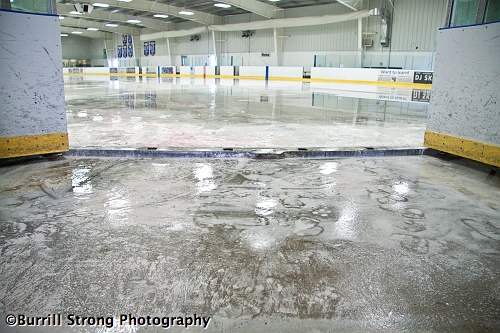
The prevalence of white ice means the work crew also leaves behind plenty of evidence along its route.

If Horatio Caine were around, he’d likely use his suspension-of-disbelief magic to find a tool mark from a murder weapon and the suspect’s reflection in the tread, thereby sealing the case and providing a fine opportunity to dramatically don his trademark sunglasses and utter yet another one-liner. Fortunately, there was neither a murder to solve nor a painfully melodramatic TV detective to use hilariously improbable (or impossible) methods to solve the murder, so work could continue without unnecessary delay.
At that point, though, there wasn’t much work to continue: after the ice melted, the next step was to let the sand dry out. Watching sand dry is exactly as fascinating as it sounds, so the next set of photos will be from day 6.

